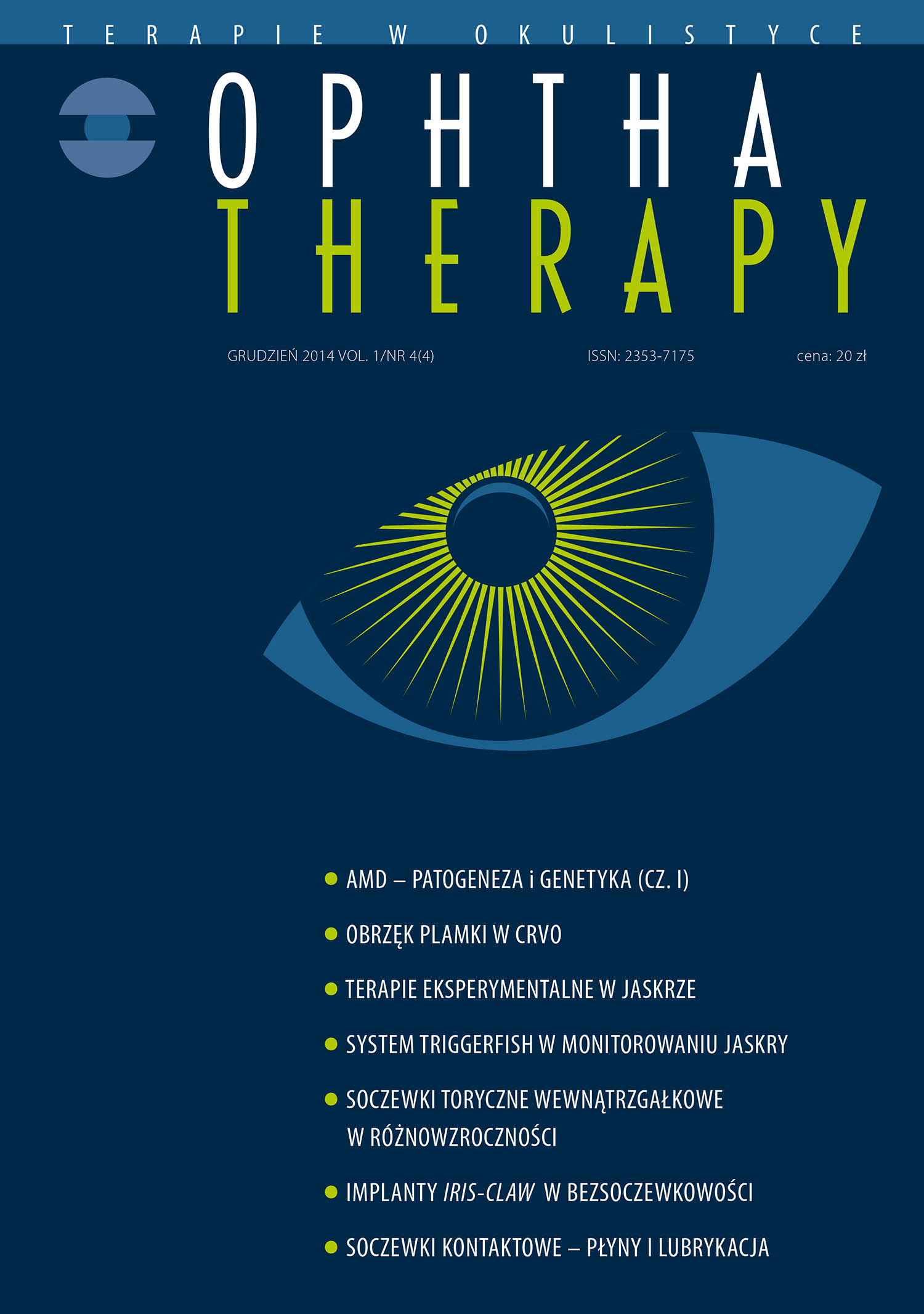Implantation of toric intraocular lens during catarct phacoemulsification is highly effective procedure in the treatment of axial astigmatic anisometropia ? case report
Main Article Content
Abstract
Anisometropia is the condition in which the two eyes have unequal refractive power. Uncorrected anisometropia leads to amblyopia, lack of stereopsis and results in deficits in contrast sensitivity. A half of amblyopia cases are caused by anisometropia. A 39-year-old female with posterior subcapsular cataract was treated by implantation of a toric intraocular lens during phacoemulsification for axial, complex, astigmatic anisometropia. After catarct surgery with the implantation of binocular toric lens, she does not require spectacles for distance vision, however she still uses spectacles for near vision. She has stereopsis and receives the permission to work at a height. The results of treatment of our patient were then compared with the data presented in the literature.
Downloads
Article Details

This work is licensed under a Creative Commons Attribution-NonCommercial-NoDerivatives 4.0 International License.
Copyright: © Medical Education sp. z o.o. License allowing third parties to copy and redistribute the material in any medium or format and to remix, transform, and build upon the material, provided the original work is properly cited and states its license.
Address reprint requests to: Medical Education, Marcin Kuźma (marcin.kuzma@mededu.pl)
References
2. Wutthiphan S. Guidelines for prescribing optical correction in children. J Med Assoc Thai. 2005; 88 (suppl. 1): 63-9.
3. Barrett BT, Bradley A, Candy TR. The relationship between anisometropia and amblyopia. Prog Retin Eye Res. 2013; 36: 120-58.
4. Bartkowska J. Optyka i korekcja wad wzroku. PZWL, Warszawa 1996: 108.
5. Hashemi H, Khabazkhoob M, Emamian MH et al. All biometric components are important in anisometropia, not just axial length. Br J Ophthalmol. 2013; 97: 1585-91.
6. Visser N, Beckers HJ, Bauer NJ. Toric vs Aspherical Control Intraocular Lenses in Patients With Cataract and Corneal Astigmatism: A Randomized Clinical Trial. JAMA Ophthalmol. 2014; Sep 25. https://doi.org/10.1001/jamaophthalmol.2014.3602.
7. Holland E, Lane S, Horn JD. The AcrySof Toric intraocular lens in subjects with cataracts and corneal astigmatism: a randomized, subject-masked, parallel-group, 1-year study. Ophthalmology. 2010; 117: 2104-11.
8. Miyake T, Kamiya K, Amano R. Long-term clinical outcomes of toric intraocular lens implantation in cataract cases with pre-existing astigmatism. J Cataract Refract Surg. 2014; 40: 1654-60.
9. Gerten G, Michels A, Olmes A. Toric intraocular lenses. Clinical results and rotational stability. Ophthalmology. 2001; 98: 715-20.

